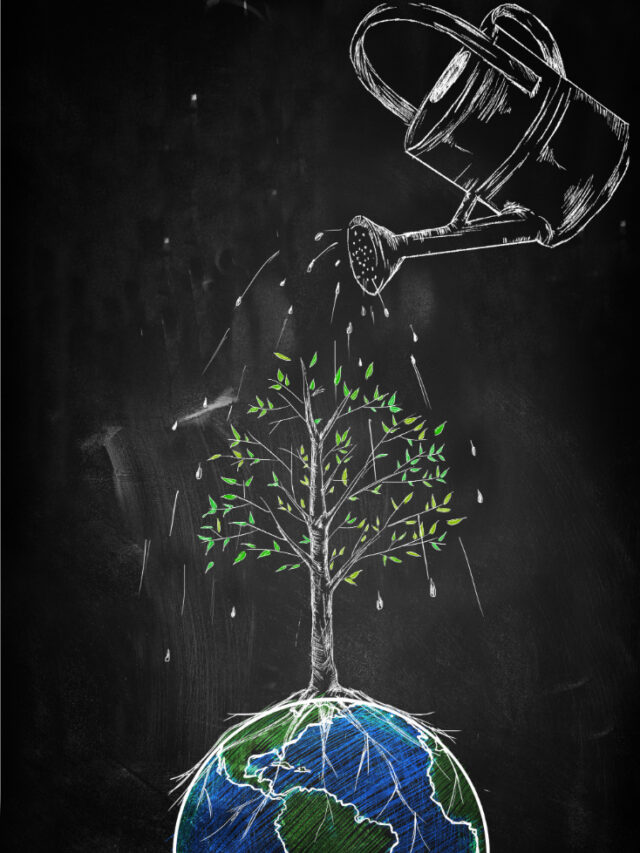In recent years, the conversation around climate change has intensified, with visible effects manifesting globally. As we navigate through scorching summers, unprecedented storms, and erratic weather patterns, there’s an emerging concern that’s hitting closer to home – our eating habits.
Yes, the weather is messing with your meals, and this is no longer a distant possibility but an alarming reality that requires our immediate attention.
The Alarming Reality
By 2050, the global population is expected to soar to 9.8 billion, adding 3.4 billion people to feed in the future. The staple foods that form the backbone of our diet – corn, wheat, and rice – make up 51% of the world’s staple food consumption.
While debunking food myths these crops, being plant-based, are heavily dependent on favorable climatic conditions. However, the impacts of climate change – including higher temperatures, extreme weather events, droughts, increasing levels of carbon dioxide, and rising sea levels – threaten to drastically decrease both the quantity and quality of our food supplies.
The Dire Consequences
A recent study on global vegetable and legume production warns that if greenhouse gas emissions continue unabated, yields could plummet by 35% by 2100 due to water scarcity, increased salinity, and ozone levels.
Research indicates a 7% risk of the top four corn-exporting countries (U.S., Brazil, Argentina, and Ukraine) experiencing simultaneous crop failures of 10% or more with just a 2˚C increase in temperature. Considering that 80% of the world’s crops are rain-fed, unpredictable weather patterns severely jeopardize agricultural productivity.
Moreover, flooding, driven by the growing intensity of tropical storms and rising sea levels, threatens to drown crops. Floodwaters can carry pollutants, sewage, and pathogens into farmlands, contaminating our food supply.
Additionally, about 10% of crops in major food-producing regions rely on non-renewable groundwater, which is already over-exploited in areas like the U.S. Great Plains, California’s Central Valley, and parts of Pakistan, India, and China. This could be the same reason for altering food habits in the lives of people of that region.
Everything is Connected
The intricate balance of our ecosystem means that any change in one element can ripple through the entire system. Elevated CO2 levels can, paradoxically, benefit certain crops by reducing water loss from plant shoots and leaves.
However, this also slows down their nutrient uptake, leading to deficiencies in essential vitamins. For instance, rice grown under high CO2 conditions showed significant reductions in vitamins B1, B2, B5, and B9.
Furthermore, climate change enables weeds, pests, and fungi to expand their ranges and numbers, posing additional threats to crops. According to a 2011 National Academy of Sciences report, every degree Celsius increase in global temperature could decrease overall crop production by 5 to 15%.
Steps to Mitigate Climate Change
It’s clear that the effects of climate change are profound and multifaceted rising climate anxiety and food choices differences. But there are steps we can take as individuals to contribute to mitigating its impact:
- Reduce Carbon Footprint: Simple actions like using public transport, carpooling, reducing energy consumption, and supporting renewable energy sources can make a significant difference.
- Sustainable Eating Habits: Opt for plant-based diets, reduce meat consumption, and support local, organic farmers. This reduces the carbon footprint associated with food production and transportation.
- Waste Reduction: Minimize food waste by planning meals, storing food properly, and composting organic waste. Reducing waste conserves resources and decreases greenhouse gas emissions from landfills.
- Support Sustainable Agriculture: Advocate for and support agricultural practices that conserve water, improve soil health, and enhance biodiversity. Techniques like crop rotation, agroforestry, and organic farming are pivotal.
- Conservation Efforts: Participate in or donate to conservation initiatives aimed at preserving forests, wetlands, and other critical ecosystems that act as carbon sinks.
Embracing the Future
As the climate crisis escalates, we must also explore alternative food sources. Insects, for instance, offer a high-protein, sustainable alternative to traditional livestock. They require fewer resources to farm and produce significantly lower greenhouse gas emissions.
Ultimately, tackling climate anxiety and food choices requires collective action and individual responsibility. By making conscious choices and advocating for systemic change, we can ensure that future generations inherit a world where their meals are not dictated by the whims of a changing climate. Nature is sounding the alarm – it’s time for us to respond.








